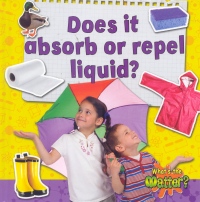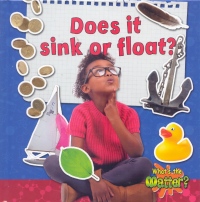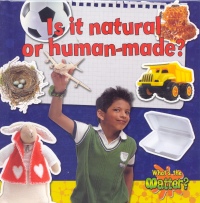| ________________
CM . . .
. Volume XXI Number 9 . . . . October 31, 2014
excerpt:
Now numbering 10 volumes, the “What’s the Matter?” series introduces young readers to the physical properties of different materials. Each book begins with a definition of matter and explains simple concepts through contrasting physical properties and providing examples of materials that are commonly found in a child’s daily life. The books are comprised of 10 chapters each, along with a “words to know” section and an index. At the back of the book is a page for the adults - parents or teachers - who are reading the book with the child. This page provides some questions to ask the youngster, a related activity or experiment, and an idea for extension of the subject, though there is an inconsistency in the quality of the activities among the titles. The size of the books is perfect for little hands, and the large, simple font and colourful photographs suit the target audience. A table of contents is included. Does It Absorb or Repel Liquid? invites readers to take a look at their home surroundings and find materials that either absorb water, oil, juice and other spills or repel them. The word “porous” is introduced to further explain why some materials are better at absorption than others. Readers will not only see examples of materials that absorb (sponge, mop, cloth) or repel (raincoat, rubber tires, latex gloves), but they will also have to ponder some questions to extend their thinking, such as how do waterproof feathers help ducks? Buoyancy is a property of matter. In Does It Sink or Float?, readers will learn that there are several reasons why objects float. Some objects are more buoyant because of their low density in comparison to that of water; some, such as water wings and inflatable rafts, float because they are filled with air; and others float on account of their shape (e.g. a thin, flat piece of plasticine will float, but a round ball of it will not). A submarine can both sink and float depending on how much air is inside it. Is It Hard or Soft? is, perhaps, the easiest of the scientific concepts for youngsters to grasp. The texture of an object makes it feel different. Things which are soft can be compressed, while those that are hard cannot. In this title, the advantages of hardness for protection- e.g. a turtle’s shell, a bicycle helmet, a lunch box- are examined. Many products on the market today are made from natural materials. Is It Natural or Human-made? attempts to demonstrate the difference between what is readily found in nature and the products that are created from it. For instance, a tree is found in nature, but the wooden table is made by humans; the pumpkin grows in the garden, but the pumpkin pie is baked by humans; wool comes from sheep, but the woolen mittens and scarves are knit by people. Also mentioned in this title is nylon fabric and plastic, a material that is made from oil. Perhaps the author could have provided a little more information about how those materials came to be invented and what, exactly, they’re made of. Generally speaking, readers of this series would derive greater benefit from the books, not only if an adult were to read and discuss the concepts with them, but also if they were to try some of the activities listed at the back of the books. Recommended with Reservations. Gail Hamilton is a former teacher-librarian in Winnipeg, MB.
To comment on this title or this review, send mail to cm@umanitoba.ca.
Copyright © the Manitoba Library Association. Reproduction for personal use is permitted only if this copyright notice is maintained. Any
other reproduction is prohibited without permission.
CM Home | Next Review | Table of Contents for This Issue - October 31, 2014 | Back Issues | Search | CM Archive | Profiles Archive |



